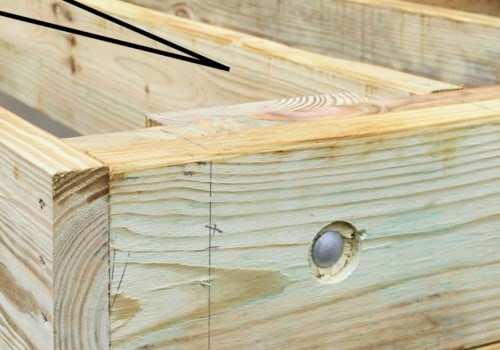When constructing a deck, one of the most critical aspects to consider is the spacing of the support beams. The distance between deck support beams, also known as joists, directly impacts the deck's structural integrity, safety, and longevity. Proper spacing ensures that the deck can bear the expected loads, prevent sagging, and provide a stable surface. This expert's guide will delve into the key factors influencing beam spacing, typical measurements, and best practices to achieve a durable and safe deck.
Importance of Beam Spacing
The primary function of deck support beams is to distribute weight evenly across the deck structure, preventing concentrated loads that could cause failure. Inadequate spacing can lead to structural issues such as bending, warping, or even collapse under heavy loads. Conversely, overly conservative spacing might unnecessarily increase construction costs and materials without significant benefits. Therefore, understanding the correct spacing requirements is essential for building a safe and cost-effective deck.
Factors Influencing Beam Spacing
Several factors influence the optimal spacing of deck support beams, including the type of decking material, the expected load, and local building codes. The most common decking materials include wood, composite, and PVC, each with different load-bearing capacities and flexibilities. For example, composite decking, though durable, may require closer joist spacing compared to traditional wood to prevent sagging. Additionally, the deck's purpose—whether for light residential use, such as family gatherings, or heavy-duty use, like supporting hot tubs or outdoor kitchens—will determine the required load-bearing capacity and, subsequently, the beam spacing.
Standard Beam Spacing Measurements
For residential decks, the standard beam spacing typically ranges between 12 inches and 24 inches on center (OC). The term "on center" refers to the distance from the center of one beam to the center of the next. For softwood decking materials like pine or cedar, a common spacing is 16 inches OC. This spacing provides adequate support for typical residential loads and prevents noticeable deflection underfoot. However, if using more flexible materials like composite or planning for higher loads, reducing the spacing to 12 inches OC can provide additional support and stability.
Local Building Codes and Regulations
Adhering to local building codes is crucial when determining beam spacing. Building codes are designed to ensure safety and structural integrity based on regional considerations such as climate, soil conditions, and load requirements. Before starting any deck construction, consult local building codes or a structural engineer to confirm the recommended beam spacing for your area. Compliance with these regulations not only ensures safety but also helps avoid potential legal issues and penalties.
Practical Considerations for Beam Spacing
In addition to technical specifications, practical considerations play a role in determining beam spacing. For instance, ease of construction and material availability can influence spacing decisions. Standard lumber sizes, typically available in increments of 2 feet, may dictate practical spacing intervals to minimize waste and simplify construction. Furthermore, integrating additional features like railing posts, stairs, and landscape lighting in Boca Raton can affect the spacing and placement of beams to ensure proper support and aesthetic integration.
Best Practices for Deck Construction
To achieve optimal beam spacing and overall deck stability, follow these best practices:
Use Quality Materials: Ensure all beams, joists, and decking materials meet or exceed building code requirements and are suitable for your specific environmental conditions.
Proper Fastening: Use appropriate fasteners and connectors designed for outdoor use to secure beams and joists, preventing movement and ensuring longevity.
Regular Inspection: Periodically inspect the deck structure for signs of wear, such as rot, rust, or loosening of connections, and perform necessary maintenance to prolong the deck's life.
Professional Consultation: Engage with a professional contractor or structural engineer, especially for large or complex deck projects, to ensure all aspects of the design and construction are sound.
Load Calculations: Perform accurate load calculations to determine the deck's intended use and required support, adjusting beam spacing accordingly to accommodate specific loads and prevent overloading.
Conclusion
Determining the appropriate spacing for deck support beams is a crucial step in ensuring the structural integrity and safety of your deck. By considering factors such as the type of decking material, expected load, and local building codes, you can establish the optimal spacing that provides sufficient support and durability. Standard spacing typically ranges between 12 inches and 24 inches on center, but specific requirements may vary based on the project details and regional regulations. Integrating practical considerations, quality materials, and professional guidance will further enhance the stability and longevity of your deck, creating a safe and enjoyable outdoor space for years to come.







